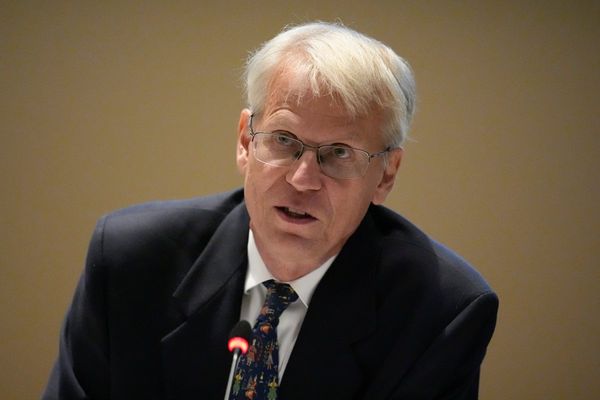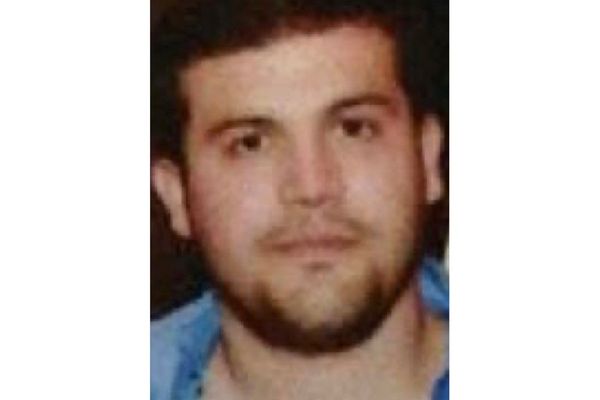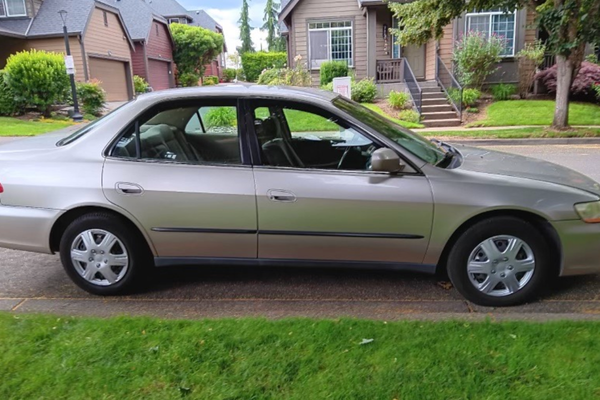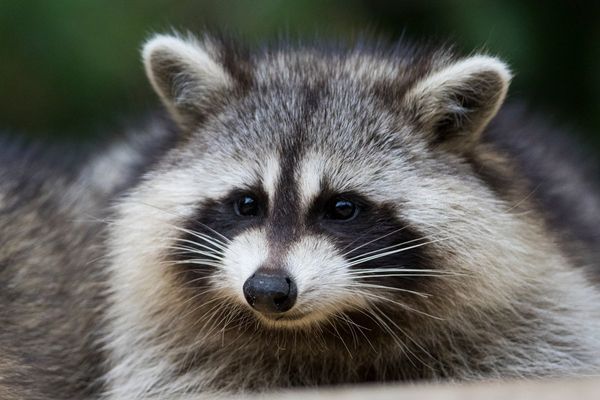
The US Open has always been the unruliest of tennis’s four grand slam tournaments, a place where the soundtrack is as much screeching trains, the roar of air traffic overhead and well-lubricated crowds as it is the thwack of racket on ball. Frances Tiafoe likes to call it “organized chaos”, the sort of life-affirming atmosphere that he says teases out his best performances. For some, it’s no stage at all but a blur of bass-heavy changeovers, revolving-door celebrity cameos and the ceaseless rattle of the nearby No 7 subway.
In recent years, though, one distraction has cut through even the normalized bedlam that gives the tournament its character. Alongside the honey deuce cocktails and free-flowing Heineken, a different vice has threaded itself into the fortnight: the pungent and unmistakable odor of marijuana. It drifts across the Billie Jean King National Tennis Center with enough frequency that players have begun treating it as not a bug but a feature of the event itself.
Casper Ruud, the 2022 US Open runner-up from Norway, was the latest to complain during last week’s mixed doubles tournament while paired with Iga Świątek. “For me, this is the worst thing about New York,” he said. “The smell of cannabis. It’s everywhere, even here where the tournament is being played. But we have to accept it. I think it’s annoying to be on the court while someone smokes a joint. It’s no fun for us players to be tired and have to inhale the smell of hashish at the same time. We can’t do anything about it unless the law changes, but I doubt that will happen.”
The complaints have been loud enough that Danish media have even dubbed Court 17 hash-banen – the “hash court” – cheeky shorthand for the bullring-like show court where the aroma of weed has become nearly as much a part of the atmosphere as the noise of the crowd.
🌿👃 😡
— Eurosport Polska (@Eurosport_PL) August 25, 2025
Casper Ruud najwidoczniej w młodości nie był fanem Boba Marleya 😬#USOpen pic.twitter.com/p0XZcIlUmn
The USTA has maintained a strict no-smoking policy since at least 2011, when New York City mayor Mike Bloomberg’s smoking ban was expanded to public parks, beaches and pedestrian plazas. Yet since New York legalized recreational cannabis in 2021, Flushing Meadows has become a microcosm of the state’s shifting culture.
Within the grounds, security enforces the rules (if not aggressively). But take a few steps just outside into Corona Park, which abuts the south end of the grounds, and anyone over 21 can legally toke up: under the 2021 law, adults may possess up to 85 grams of cannabis and smoke it anywhere tobacco use is permitted. On Sunday afternoon as the first day of the tournament unfolded, smokers fired up prerolls within clear view of the gaggles of police outside the South Gate. The shift has been embraced by city leaders. Mayor Eric Adams, a former NYPD captain, even encouraged New Yorkers to “enjoy yourself, light up, but most importantly – spend some money.” That permissive stance, coupled with a patchy licensing rollout that has allowed hundreds of unregulated storefronts to flourish, has made cannabis feel inescapable across the five boroughs – and this particular expanse of Queens is no exception.
The smell of weed at the US Open, however, predates legalization. In 2014, Martina Hingis remarked on it during a doubles match on the old Grandstand court. Since then, a parade of players – Nick Kyrgios, Maria Sakkari, Alexander Zverev – have all voiced frustration. Sakkari’s 2023 first-round loss to Rebeka Masarova became one of the more notorious episodes. Midway through the match she pleaded with the chair umpire about the distraction, later telling reporters: “Sometimes it smells food, sometimes it smells cigarettes, sometimes it smells weed. It’s something that we cannot control because we’re in an open space. There’s a park behind. People can do whatever they want.”
Kyrgios, combustible at the best of times, was incensed during his second-round win over Benjamin Bonzi in 2022. He urged the umpire to remind spectators not to smoke, complaining the odor was particularly harsh on his breathing as an asthmatic. “It was fucking marijuana. Obviously, I’m not going to complain about food smells,” he’d later say. “But probably not something I want to be breathing in between points.” Afterward he admitted the distractions of New York – heckling fans, roaring trains, and now marijuana smoke – made it harder to stay locked in point to point.
Zverev was blunter. After a match on Court 17 two years ago, the German likened the atmosphere to “Snoop Dogg’s living room”. The intimate, 2,800-seat stadium with no reserved seating, which has become a fan favorite since the demise of the old Grandstand, has also earned a reputation as the epicenter of the smell. Zverev’s assessment has since taken on a life of its own. A story this week previewing Thursday’s court assignments quipped that Holger Rune had been sent to hash-banen for his second-round match, creating an aura that has proven stickier than your highest-grade kine bud.
Tournament officials have resisted the suggestion that Flushing Meadows has become a stoner’s playground.
“While we can’t control what takes place off the grounds of the USTA Billie Jean King National Tennis Center, we continue to be vigilant as we maintain this facility as a smoke free environment,” a USTA spokesperson told the Guardian this week. “This includes enforcement by our security and guest services teams when they are made aware of any individual that may be smoking, making them aware that although it may be legal in [New York], that smoking is not permitted on parks property including the tennis center. We constantly work with the NYPD and Parks Department, and we believe this has helped to decrease any smoking near our fenceline.”
After Sakkari’s comments in 2023 made headlines, the USTA reviewed video footage and interviewed staff. “No evidence” was found of fans lighting up inside Court 17, a tournament spokesperson said. Instead, officials suggested, the smoke likely drifted from Corona Park. Players themselves have acknowledged as much. Marketa Vondrousova, the 2023 Wimbledon champion, said after her match that same year: “I smelled it actually today also. You smell it a lot. I think it’s just Court 17. That court is so far away, it’s almost in the park. I think it’s coming from the park.”
From the organizers’ perspective, nothing has changed. It’s not like the posters of past tournaments which line the bowels of Arthur Ashe Stadium have been swapped out for Bob Marley photomosaics and the Pink Floyd Back Catalogue. The USTA still sells itself as the buzziest of the four slams, but emphatically not that kind of buzz. But it’s not only spectators who are leaning in to the relaxed attitudes toward cannabis. One camera operator, who requested anonymity to protect his job, said he now relies on edibles to get through marathon shifts that sometimes stretch past 16 hours.
Security staffers stationed by the outer courts have noted the same. “We can’t police what happens outside in the park,” one said. “You catch a whiff on every corner. Around here, it’s just normal.” For all the gripes, the rules are clear: within the gates, smoking of any kind, including weed pens, is banned. Beyond them, the USTA has no jurisdiction.
Fans, too, seem largely unfazed. Steven Lewis, waiting in line for a Court 17 match on Monday afternoon, waved off the complaints. “You can smell it walking down the street in Midtown, sometimes at eight in the morning on a weekday, and it was the same even before it was legalized,” he said. “It’s just a part of New York. I don’t see why the Open would be any different.”
Indeed, part of the intrigue here is cultural. The Open has always leaned into its identity as tennis’s loudest, least buttoned-up major. For players more accustomed to the hushed lawns of Wimbledon or at Roland Garros – where there is a total ban on alcohol in the stands to ensure a respectful atmosphere during play – it can feel like sensory overload. For locals, it’s just the city in microcosm.
Legal marijuana is now embedded in New York life. That reality sits uneasily against the prim image tennis still projects, but the contradictions are unavoidable at a tournament staged in the heart of Queens. As Ruud lamented, even before Wednesday’s second-round loss on the hash court, there may be little recourse beyond plugging one’s nose and focusing on the next point. Some players thrive in it and others recoil. Either way, the Open keeps rolling.







